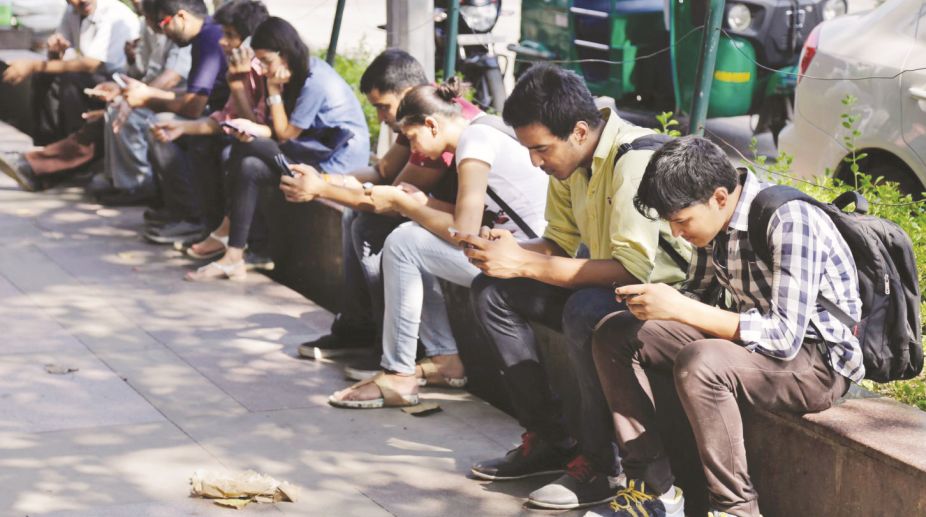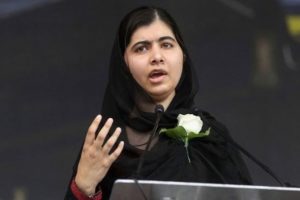US President John Madison (1809-17) had once said, “The advancement and diffusion of knowledge is the only guardian of true liberty”. Yet Lysander Spooner (1808-87), the American political philosopher, essayist and entrepreneur qualified Madison, saying “Those who are capable of tyranny are capable of perjury to sustain it.”
If knowledge were the truest guardian of liberty, it was equally true that knowledge could be turned on its head and become the cause for tyranny based upon misrepresentation and misuse of knowledge, peddled as lies, often abominable ones. That is exactly what the telecom revolution sweeping across India is doing and in it may well lie the seeds of an emerging new political order, one that is young, dynamic, transparent and accountable on a day-by-day basis.
Advertisement
India’s Telecom Regulatory Authority’s statistics are very revealing. The number of mobile phone users in India exploded by 279 million from March 2014 to March 2018, i.e. by 31 per cent. Of these, 150 million or 54 per cent were in rural areas. The combined rural-urban monthly growth that was a tiny 0.13 per cent in March 2014 rose to a phenomenal 2.29 per cent, an eighteen-fold rise. Rural wireless users comprised 44 per cent of all users in March 2014 against 41 per cent in March 2014. In terms of wireless tele-density, rural areas showed a 15 per cent rise competing on equal terms with urban areas.
The disparity in terms of absolute urban-rural populations that was 161 million in March 2014 reduced to 141 million in March 2018, i.e. by about 12-13 per cent.
In tandem, mobile broadband users rose from 61 million in March 2014 to 394 million in March 2018, i.e. six-fold. While the internet user base in India is growing at a rapid rate, most of these users (75 per cent) belong to the age-group of less than 35 years. More than half of the App users in India are aged between 18 and 24 years and a further 29 per cent between 25 and 35. Forty-five per cent of these users live in the four metros.
In fact, 91 per cent of broadband users are in the age group of 15-44 with 75 per cent being in age group of 15-34. On an average, an internet connected user in India spends 14 per cent of his or her time and 17 per cent of his or her monthly spending on entertainment. Combined spend by an internet user on Mobile and Entertainment increased by 34 per cent in two years from 2012 to 2014.
In terms of media consumption, an average mobile web user in India consumes about 6.2 hours of media daily which includes 102 minutes of mobile media and 79 minutes of online (desktop) media consumption. Social media and entertainment (Music & Video) are the two activities on which the Indian mobile internet users spend their time the most followed by games, general search, and emails.
Out of the total time spent on digital media by youth, about 21 per cent of the time is spent on audio and video entertainment. Spending per month by users on digital media especially entertainment is expected to grow by 2.5 times by 2020. In July 2014, a user in the age-group of 15-24 years watched 66.8 online videos on an average, while users above 45 years of age watched only 53.2 videos in that month.
The spread of Internet in India is visible from the fact that in 2015 Indians owned 700 million feature phone (E-mail, Social networking apps and Web browser app), 164 million smart phones; 2 million 3G sets, 10 million 3G/4G dongles while 18.7 million had access to Wi-Fi or wired broadband. The sale of smart phones is expected to grow to 655 million by 2020, i.e. nearly four-fold in just five years.
About 65 per cent of Indians shared their videos through mobile as compared to 53 per cent globally during 2013. This has led to a speedy growth in user-generated content platforms. With that high usage of online videos total Internet video traffic in India is expected to be 72 per cent of all Indian Internet traffic in 2018, up from 45 per cent in 2013.
Alongside, television ownership has also risen from 169 million households and is estimated to touch 182 million by March 2019, i.e. a conservative 8 per cent . Yet in absolute numbers, the BARC Broadcast Survey 2016 showed India’s TV viewing universe at 780 million in 2017, up by 16 per cent since 2013.
The BARC study showed that nuclear families, without elders, were on the rise. The family size has declined from 4.39 in 2015 to 4.15 in 2016. In fact, the average family size even in TV-owning households of rural India is shrinking.
As per the Indian Readership Survey 2013, the average family size in rural India was 4.71 compared to 4.63 now. Rural India has 17 per cent more TV owning households than urban India. The urban-rural split in terms of percentage of TV penetration too has changed from 49:51 to 46:54. A comparison of TV viewership data in the 41st week of 2015 against the 41st week of 2016 showed that TV impressions in India increased by 24 per cent ~ 18 per cent in urban and 30 per cent in rural India.
Not just this, even the average time spent jumped 21 per cent ~ 17 per cent in urban India and 26 per cent in rural. Soaps followed by film-based programmes were a hit among rural audiences . Private TV channels numbered 883 as of June 2017. Of these, 456 were news channels. The penetration of vernacular TV channels is concomitantly spectacular.
These channels broadcast in diverse languages such as Hindi, Bengali, Oriya, Tamil, Telugu, Kannada, Malayalam, Sindhi, Gujarati, Kashmiri, Maithili, North-eastern languages and innumerable more. They are also more state and local centric than national channels.
EM Forster once said, “We are not concerned with the very poor. They are unthinkable, and only to be approached by the statistician or the poet.” Ironically, it is the spread of communications technology that could see the emergence of a far more accountable and stable political order after the next general election in India by bringing 72 per cent of India’s total population (rural areas) finally into the ambit of government.
(To be concluded)
The writer is a senior public policy analyst and commentator











